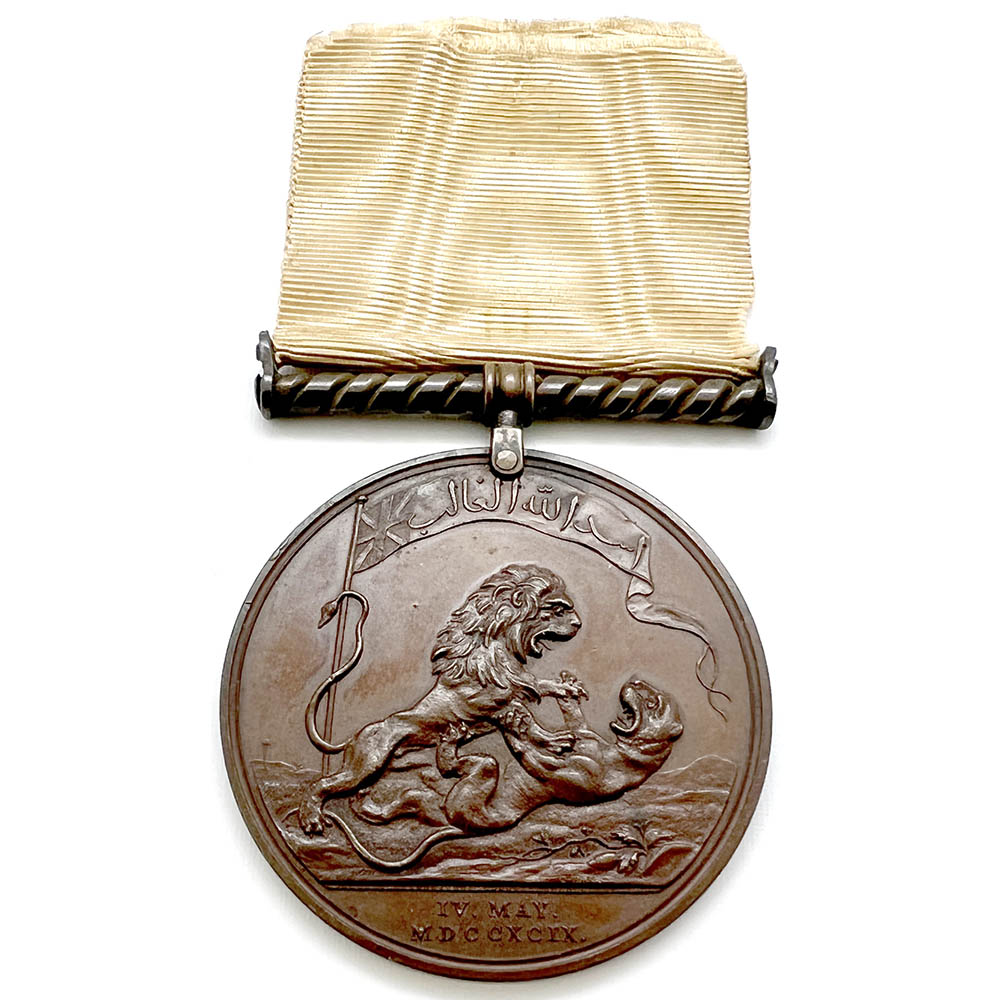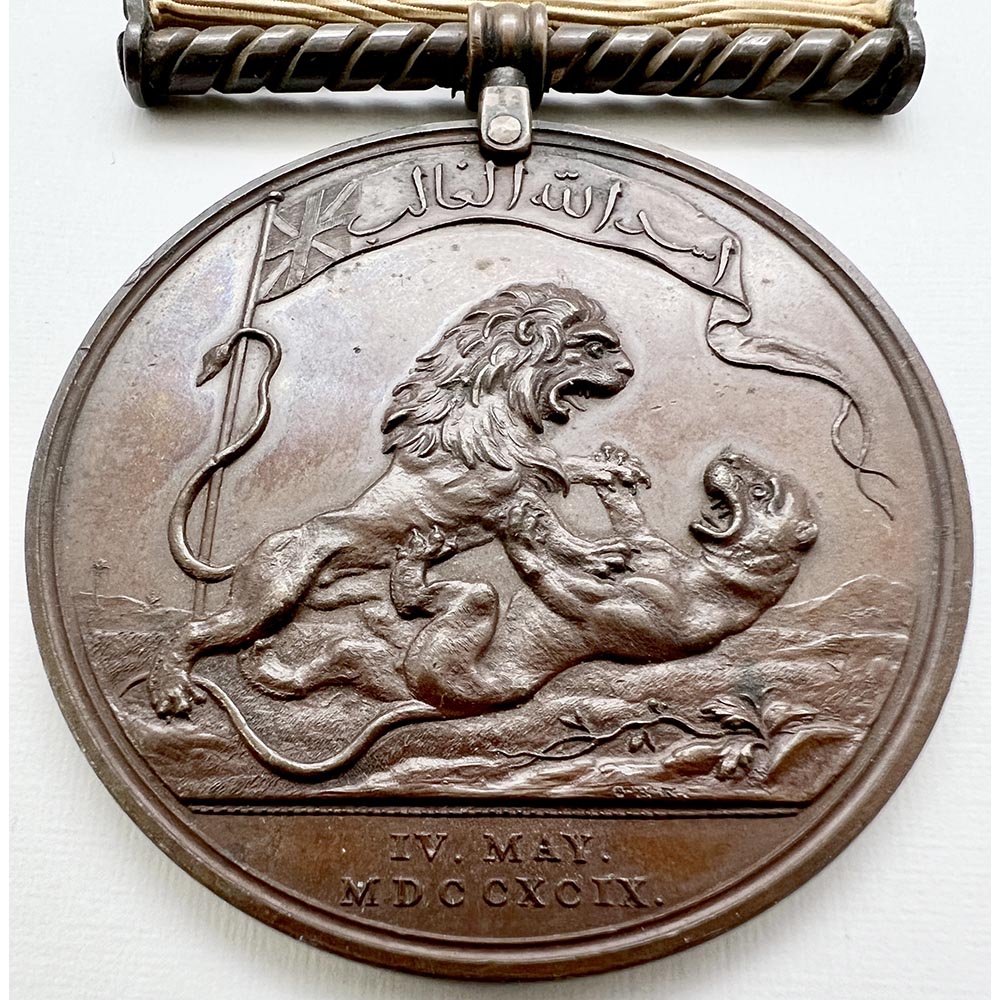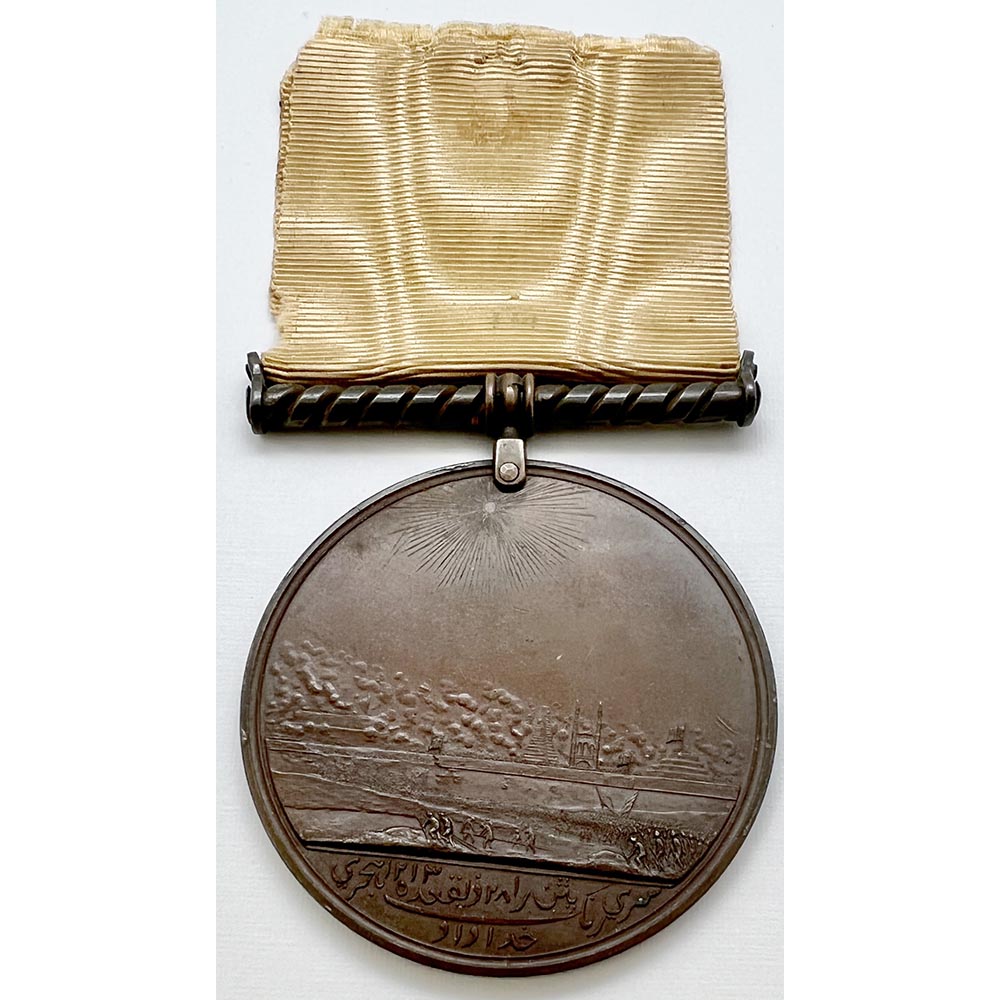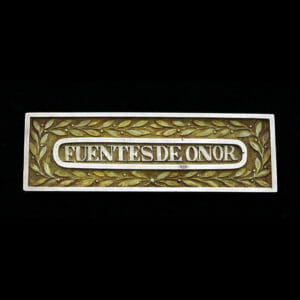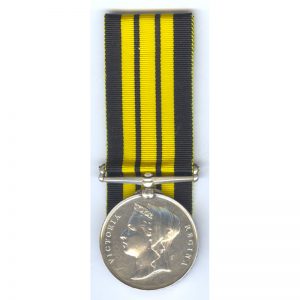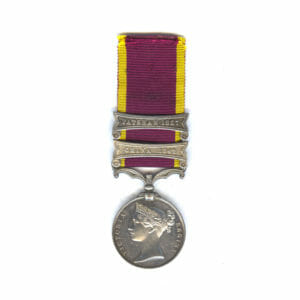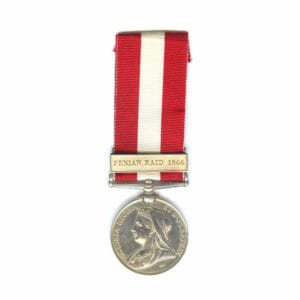Description
Seringapatam Medal, Bronze, 17th May 1799, An excellent original bronze striking.
Fitted with contemporary matching bronze suspension for wear on old silk ribbon.
Soho Mint production, with great detail and clear engravers initials “C.H.K.”. An attractive striking and well preserved example.
During the war, the Combined British Force along with allied Indian Kingdoms, fought against the enigmatic Tipu Sultan, Sultan Fateh Ali Sahab Tipu, commonly known as "The Tiger of Mysore", 1751-1799.
The front design depicts the British "Lion of God", trampling the "Tiger of Mysore".
Commonly seen in Tin or Pewter, Bronze strikings being issued to native Commissioned and Senior Non Commissioned Officers, as well as some European Sergeants and equivalents.
About 5,000 are believed to be issued in Bronze, about 3636 in Silver and about 45k in Tin.
Provenance of this piece: Ex Glendinings, May 1965, Lot 315, and then Morton and Eden Sale 110, lot 789, Hammer 650+24%=£806.
These medals were issued to soldiers who fought in the Siege of Seringapatam during the Fourth Anglo-Mysore War, fought between the Honourable East India Company and the Kingdom of Mysore, from 5th April to 4th May 1799.
This example was minted in England, one of about 5,000 examples produced in Bronze, to be issued to both British and Indian Sergeants and Non Commissioned Officers of the HEIC Army.
The design was drawn by Conrad Heinrich Küchler, the favourite Medal Artist of Matthew Boulton, employed by him at his Soho Mint.
In the closeup you can see his initials just above the date on the right.
The medals were produced about 1801-02, and sent out to India for distribution about 1808.
Tipu Sultan had allied with the French, sworn enemies of the British Empire, who had trained the Mysore Army well enough to fight back against the British H.E.I.C.
He had caused a headache to the British interests in the region for many years.
Eventually Britain launched the Fourth Anglo Mysore War during and forced their way into his fortress of "Sriringapatna Fort".
When the British broke through the walls, the Sultan's French Advisors, suggested he escape via the secret escape tunnels to continue the war.
The fierce warrior king, Tipu Sultan, refused and stood his ground with his soldiers, he was killed in the fighting during the final battle.
